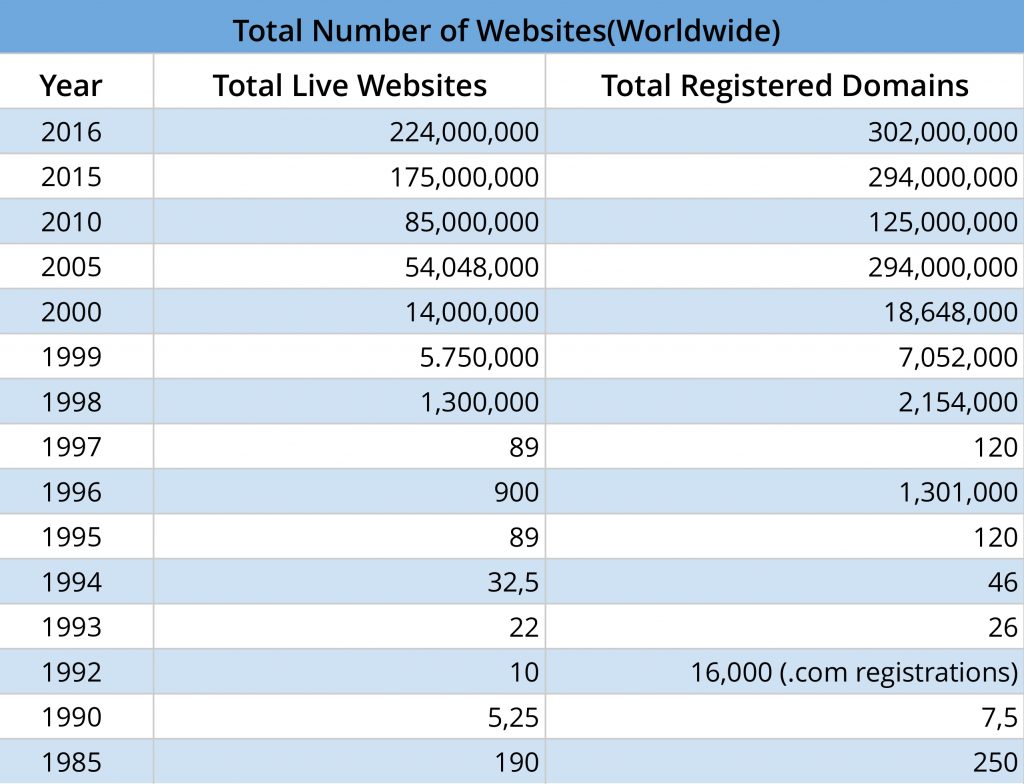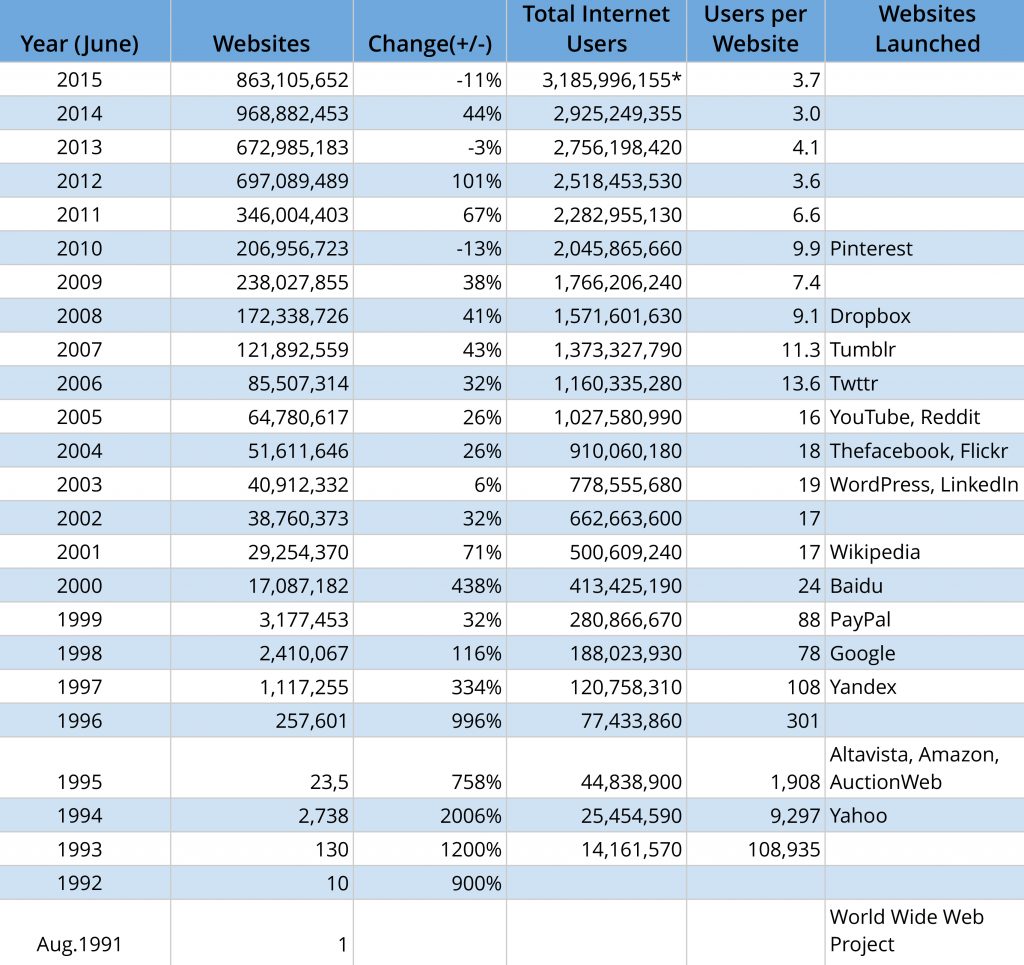The Demography of Websites
Published: April 14, 2018 / Article by: SergThe Vibrant World of Websites—Welcome to the world of World Wide Web (www/web) and websites! Today, the web is an ever growing world of interlocked and interwoven web pages packed with images, videos and not to forget, related content.
Every website does have a unique web address and it can be visited via an internet connection. All this wonderful play of web experiences presented before the user is, undoubtedly, the result of teamwork of web technologies and web browsers. A single website can reside on a couple of web servers while a single web server can support a number of websites equally well.
No wonder, the internet and the websites have become so important part of our lives and lifestyle that we just cannot imagine living without these wonderful pieces of live information available just a click away. Keeping in mind the indispensable nature and role of websites in our life, let us contemplate briefly on the history of the website industry.
A Little Bit of History
You will be amazed to know that the internet originated in the year 1969. However, the first website (http://info.cern.ch/ ) came not before 1989 at CERN (Switzerland) through the brainchild of Tim Berners-Lee, a British physicist and became public only after three years. So, origin of website dates back to just around 20 years and it has already become a part and parcel of our lives.
The first web server, the HTTP (Hypertext Transfer Protocol) and the first browser and editor named WorldWideWeb.app was also introduced by Tim Berners-Lee. The first version of the HTML (Hypertext Markup Language) was introduced in October 1990.
Out of all websites, nearly half of them are hosted on either of the two open source web servers, namely nginx or Apache. As per the figures for the year 2014, Microsoft matched Apache in market share since it was lagging from Apache by just a meager difference of 0.15 percent. For the first time ever in history, Microsoft is likely to become the top web server developer soon.
Feeling anxious to know how much has undergone change and how much has been almost the same since the origin of the wonderful web of website industry? Let us dive deep into the world of World Wide Web to know the secret behind the wonderful, interactive and fascinating web experiences we enjoy today.
Over time, web developers have been successfully churning our new and engaging web experiences by making use of the tools of web technologies available before them. The web, as we see and experience today, is the result of the steady efforts of an open online community that works collaboratively to describe all the web mechanics (including WebGL, HTML5 etc.) while making sure such web technologies are fully backed in various web portals/web directories.
The Internet is such a gamble that today’s winners (of course, we are talking about websites only) can get easily disappeared and lost instantly. The average life of webpages is said to be nearly 100 days presently.
Majority of web pages die after around a few months. Nonetheless, it has still gone up from what it used to be in the early 1990s (it was just 44 days).
Dead or Alive
Meanwhile, it may be worth mentioned that checking/counting of websites (that are dead) can prove to be a tricky affair simply because it entirely depends on your perception/definition of what a website or a webpage exactly is.
Do you define a website or a webpage by its constituents/topics or just its URL? If yes, then you need to understand that any dead link does not always mean that the content does not exist any longer. Rather, it could either have been shifted to a new location to which the webserver is not structured to redirect any page requests or it might just have been archived. On the other hand, a working link does not always mean that the same content is being hosted there even now (as it was earlier).
Several old websites have disappeared over the years due to varied reasons. While owners of some websites unplug the servers hosting their webpages and give up the registered domain names that help the visitors reach the site, others use expired domain names for other purposes(for posting content/advertising links to greet visitors wanting to find the original website). You can find pages of old websites by visiting “the Wayback Machine” (a part of a free online library named “the Internet Archive”— www.archive.org)
Feeling interested in knowing about the growth of the websites in all these years since it all began in 1990s?

Several estimates regarding growth and number of websites reveal that in 1994, only around 3,000 websites were online and their numbers increased to nearly one billion (a growth of 33 million percent in only two decades).
What to Expect in the Future
Latest statistics by Internet Live Stats reveal that there are nearly one billion websites on the World Wide Web and this milestone was acknowledged in the month of September 2014 (confirmed NetCraft in the Web Server Survey in October 2014).

Notice a periodic decline in the number of websites in the table above which is due to different factors including an improvisation in the handling of wildcard hostnames by NetCraft.
Nearly three-quarters of the websites are inactive but still live.
They may appear somewhat vague or imprecise and the onus must go to the impermanent nature of the web (monthly variations in the number of inactive websites). Moreover, majority of such websites may not be visible but still exist.
The future of the websites and the web is showing a trend towards Twitter and Facebook, among other social media tools. So, in the future, most of the customers will be able to know your updates by following your organization on such social media tools (Facebook/Twitter) rather than visiting your company’s website.
Hard to believe? That’s how the future seems to shape up soon. Are you feeling worried about your organization? You don’t need to be as you can still use all the website development tools by knowing your respective needs for a website and choose the tools accordingly.